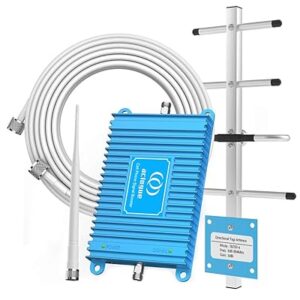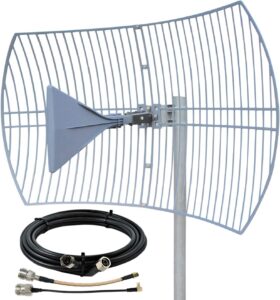In today’s connected world, a strong and reliable cellular signal is more than a convenience—it’s a necessity. Whether you’re working remotely, streaming content, or simply trying to stay in touch, weak signals can be a significant hindrance. Fortunately, technologies like cell phone signal boosters, MIMO antennas, and grid antennas offer solutions to enhance connectivity. But how do they differ, and which one is right for you? Let’s dive in.
Understanding the Basics
Before we compare these technologies, it’s essential to understand what each one does and how it contributes to better cellular connectivity.
Cell Phone Signal Boosters
Cell phone signal boosters are devices designed to amplify existing cellular signals. They consist of an external antenna that captures weak signals, an amplifier that boosts the signal strength, and an internal antenna that rebroadcasts the enhanced signal within a designated area.
- How They Work: The external antenna picks up weak signals from the nearest cell tower. The signal is then amplified and rebroadcasted inside your home, office, or vehicle.
- Best For: Areas with weak outdoor signals that need boosting indoors. Ideal for homes, offices, and vehicles where construction materials or distance from cell towers impede signal strength.

MIMO Antennas
MIMO (Multiple Input Multiple Output) antennas are advanced technologies that use multiple antennas to send and receive more than one data signal simultaneously. This method increases data throughput and improves signal quality without necessarily boosting the signal strength.
- How They Work: By utilizing multiple antennas, MIMO systems can handle multiple data streams, reducing interference and increasing bandwidth.
- Best For: Enhancing data speeds in areas with good signal strength but high network congestion. Commonly used in 4G LTE and 5G networks to improve performance.

Grid Antennas
Grid antennas, often referred to as parabolic grid antennas, are high-gain, directional antennas designed for long-distance communication. They feature a grid-shaped reflector that focuses the signal in a specific direction, significantly boosting the gain.
- How They Work: The grid reflector focuses the radio waves into a narrow beam, allowing for long-distance signal transmission and reception.
- Best For: Point-to-point communication over long distances. Suitable for rural areas where the distance to the cell tower is significant, and signals need to be directed precisely.

Comparative Analysis
Now that we have a basic understanding, let’s compare these technologies based on several key factors.
| Factor | Cell Phone Signal Boosters | MIMO Antennas | Grid Antennas |
| Purpose and Use-Cases | Ideal for general use in homes, offices, and vehicles to improve voice calls and data speeds where signals are weak indoors. | Best for enhancing data throughput in high-speed applications, such as streaming and online gaming, especially in areas with network congestion. | Suited for targeted, long-distance communication, often used in rural settings or for specialized applications like wireless internet service providers (WISPs). |
| Installation Complexity | Generally easy to install with plug-and-play setups. Professional installation can optimize performance but isn’t always necessary. | Installation can be more complex due to the need for precise placement and alignment of multiple antennas. | Installation is more involved, requiring careful alignment towards the signal source and often mounted on towers or high structures. |
| Signal Improvement | Amplify existing signals, improving both voice and data connectivity within a localized area. | Enhance data capacity and speed without amplifying the signal, relying on multiple data streams. | Provide significant gain by focusing signals, improving connectivity over long distances but primarily in a specific direction. |
| Cost Considerations | Moderate cost with options available for different budgets and coverage areas. | Can be more expensive due to advanced technology and the potential need for multiple units. | Cost varies but can be higher when considering the need for mounting structures and professional installation. |
Which One Should You Choose?
The decision depends on your specific needs:
- Choose a Cell Phone Signal Booster if:
- You have weak indoor signals but reasonable outdoor coverage.
- You need a straightforward solution to improve voice calls and data speeds in a specific area.
- Choose a MIMO Antenna if:
- You require higher data throughput and are in an area with good signal strength but high network traffic.
- You’re utilizing advanced cellular technologies like 4G LTE or 5G and need to maximize data performance.
- Choose a Grid Antenna if:
- You’re in a rural or remote area far from cell towers.
- You need to establish a point-to-point connection over a long distance.
Conclusion
Enhancing your cellular connectivity doesn’t have to be a one-size-fits-all solution. By understanding the differences between cell phone signal boosters, MIMO antennas, and grid antennas, you can select the technology that best suits your situation. Whether you’re combating weak indoor signals, needing higher data speeds, or bridging long distances, there’s a solution designed to keep you connected when it matters most.


